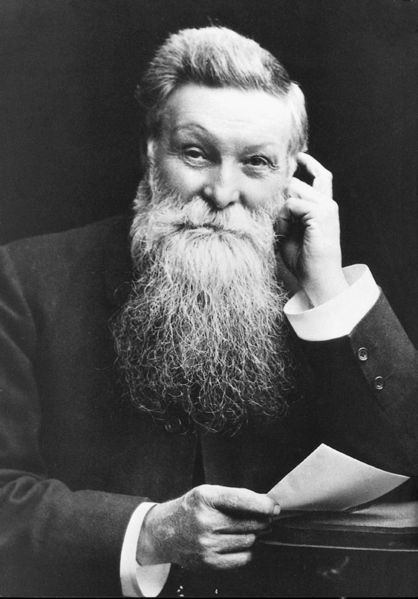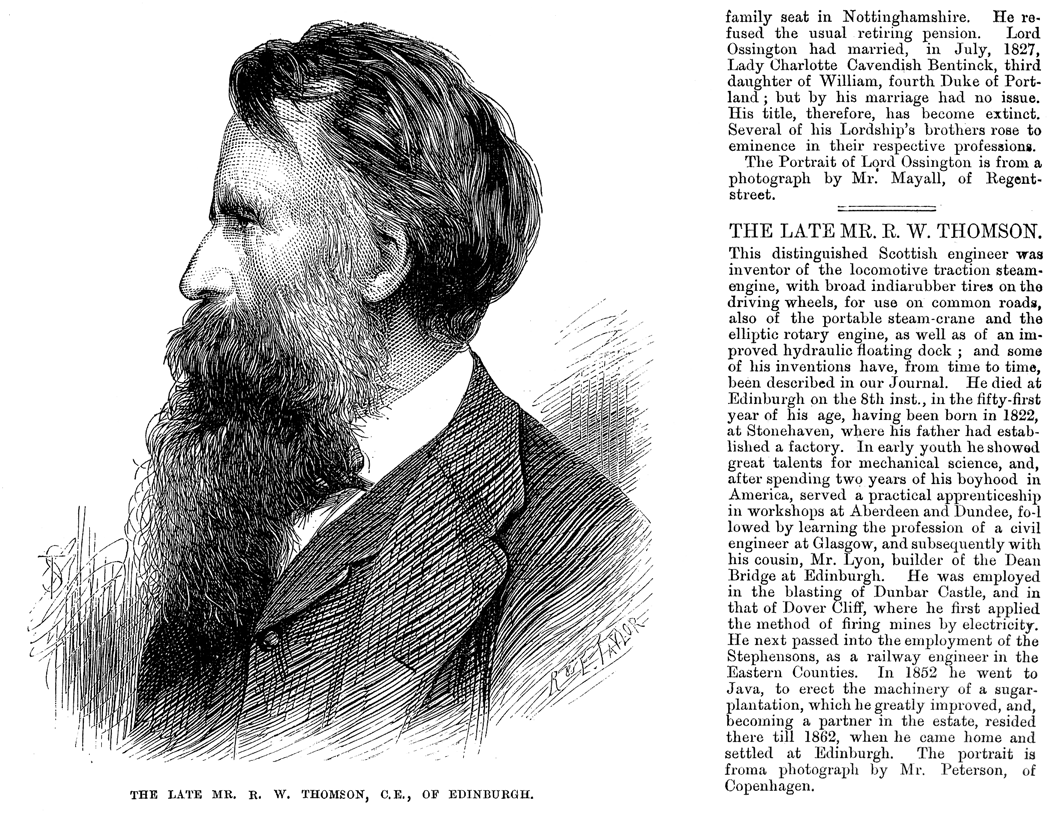The Pneumatic Tire
by Andrew Boyd
Today, a better wheel. The University of Houston presents this series about the machines that make our civilization run, and the people whose ingenuity created them.
The wheel is rightly touted as one of the great leaps of human imagination. But for those of us who drive cars or ride buses to work, it's not just the wheel, but the inflatable tire that we rely on.
Invention of the inflatable tire is often credited to Scottish veterinarian John Boyd Dunlop as he watched his young son bump along roads on his tricycle. Wrapping the solid rubber tires with glued rubber sheets and filling the cavity with air gave a more comfortable ride. Dunlop patented the idea and in 1889 convinced cyclist Willie Hume to use them in competition. Not only were the tires more comfortable, they proved an overwhelming success as the little-appreciated Hume pedaled to victory after victory in Northern Ireland. Hume's success catapulted inflatable tires into the spotlight and made them the standard for bicycles. The Dunlop name remains a well-known brand of tires, sports equipment, and a host of other products that trace their roots to rubber.

John Boyd Dunlop. He was the inventor who founded the rubber company that bears his name. Photo Credit: Wikimedia Commons

Dunlop Bridge at Super GT 2012. Photo Credit: Wikimedia Commons
Less well known is that Dunlop's patent was invalidated just two years after it was granted. Another Scotsman, Robert William Thomson, had filed patents on inflatable tires almost a half century earlier. The eleventh of twelve children, Thomson left school at age fourteen to apprentice with an uncle living in the United States. He returned to Scotland where he invented a means of detonating explosives using electricity, an idea that helped transform the mining industry by improving safety. His inflatable tire patents were filed shortly thereafter when he was only twenty-three.

Obituary of Robert William Thomson, Scottish engineer and inventor of the locomotive traction steam engine. Photo Credit: Wikimedia Commons
Calling his invention "aerial wheels," Thomson put them to use on horse-drawn carriages in London. They never caught on for what's probably the most frequent reason leading-edge technologies fail to be widely adopted: at the time, they were too expensive to make. Frustrated, Thomson turned to solid rubber for his future inventions; inventions that included improved wheelchairs and steam-driven tractors. But Thomson's efforts weren't limited to tires. His list of patents showed what a remarkably creative mind was at work. For example, at the storied Crystal Palace Exhibition held in London in 1851, he displayed a radical new invention: the self-filling fountain pen.
Inflatable tires remain the standard for cars and buses. They provide a smoother ride and better traction since the wheel deforms slightly where it meets the road. Solid rubber tires don't do that. But inflatable tires have one big disadvantage: they lose pressure and can blow out altogether. Solid tires, on the other hand, can take a serious beating and still keep working. They last longer, require less maintenance, and because they don't hug the road tight turns are easy. That makes them ideal for vehicles like forklifts. And, for reasons that aren't entirely clear, solid rubber remains the material of choice for tricycle wheels. John Dunlop and his young son would certainly appreciate the irony in that twist of affairs.

A flat tire on a Mercury Villager van. Photo Credit: Wikimedia Commons

A member of the Texas Forest Service moves a batch of MRE (meals ready to eat) in a warehouse in Tyler, TX. Photo Credit: Wikimedia Commons
This is Andy Boyd at the University of Houston where we are interested in the way inventive minds work.
(Theme music)
For a related episode, see THE CRYSTAL PALACE.
John Boyd Dunlop. From the Wikipedia website: https://en.wikipedia.org/wiki/John_Boyd_Dunlop. Accessed February 9, 2016.
Willie Hume. From the Wikipedia website: https://en.wikipedia.org/wiki/Willie_Hume. Accessed February 9, 2016.
Robert William Thomson. From the website: http://www.undiscoveredscotland.co.uk/usbiography/t/robertwilliamthomson.html. Accessed February 9, 2016.
This episode was first aired on February 11, 2016